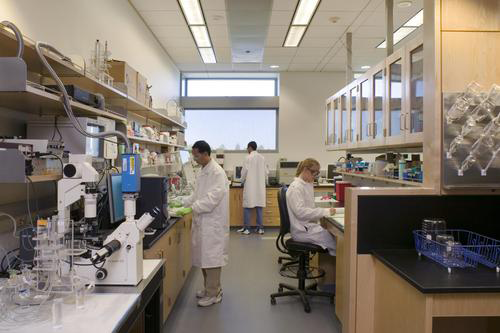Sep 17 2014 Collaboration brings physics-based approach to cancer research
Addressing today’s toughest issues requires myriad perspectives. This public-private partnership not only stretches our science research dollars; it also approaches cancer research from a perspective of fundamental physics. — Fleming Crim, Assistant Director for Mathematical and Physical Sciences, National Science Foundation
 An innovative partnership among the National Science Foundation (NSF), National Cancer Institute (NCI), Stand Up To Cancer (SU2C), and The V Foundation for Cancer Research aims to produce “transformational, theoretical biophysics” in the field of cancer research and treatment. Adopting an innovative research model known as “convergence,” the collaboration will fund an NSF Ideas Lab that brings expertise from physical, computational, and engineering sciences to research in life science.
An innovative partnership among the National Science Foundation (NSF), National Cancer Institute (NCI), Stand Up To Cancer (SU2C), and The V Foundation for Cancer Research aims to produce “transformational, theoretical biophysics” in the field of cancer research and treatment. Adopting an innovative research model known as “convergence,” the collaboration will fund an NSF Ideas Lab that brings expertise from physical, computational, and engineering sciences to research in life science.
“For many years, researchers have recognized that theoretical physics brings an important perspective to the table in studying biological issues,” said Denise Caldwell, who directs NSF’s physics division, in a recent article from Phys.org. “Using an interdisciplinary approach to living systems, researchers can make quantitative predictions of a system’s behavior that biological approaches cannot do alone.”
Researchers anticipate that the Ideas Labs will lead to integrating novel approaches from physics and mathematics, such as predictive forecasting methods, to aid the understanding of cancer as a complex, dynamic disease, according to Phys.org. This “offers the potential for revolutionary advances and more rapid innovation in the understanding and control of cancer,” said Arnold Levine, professor at the Institute for Advanced Study and vice chair of SU2C’s scientific advisory committee.
Through the collaboration, NSF will contribute $5 million, NCI $2.75 million, and SU2C in collaboration with The V-Foundation for Cancer Research $4 million to fund the Ideas Lab. The lab will ultimately bring together researchers with diverse expertise to work in teams through a five-day intensive workshop and to develop proposals that are ultimately considered for funding.
The partnership illuminates a key motivation for collaborating across sectors: Cross-industry and sector partners bring unique perspectives, expertise, and resources to the table. The process of evaluating these resources — a tactic The Intersector Project Toolkit refers to as Account for Resources — allows partners to plan how their expertise, networks, and assets can best be utilized and to determine what additional resources may be needed. In this case, partners who have traditionally collaborated around cancer research and treatment determined that the expertise and approach of physics research could contribute significantly to their work in cancer. As Fleming Crim of the National Science Foundation said, “Addressing today’s toughest issues requires myriad perspectives.”
